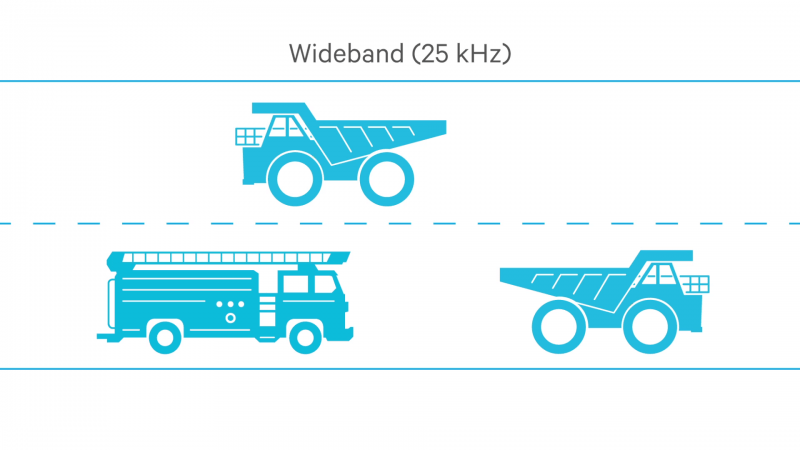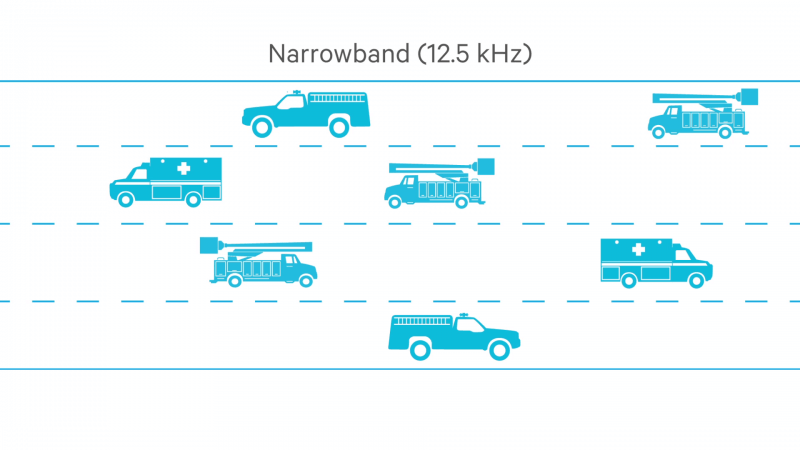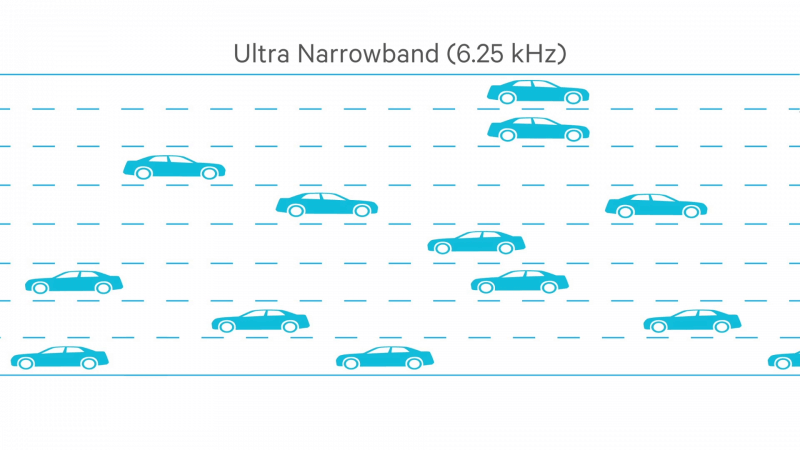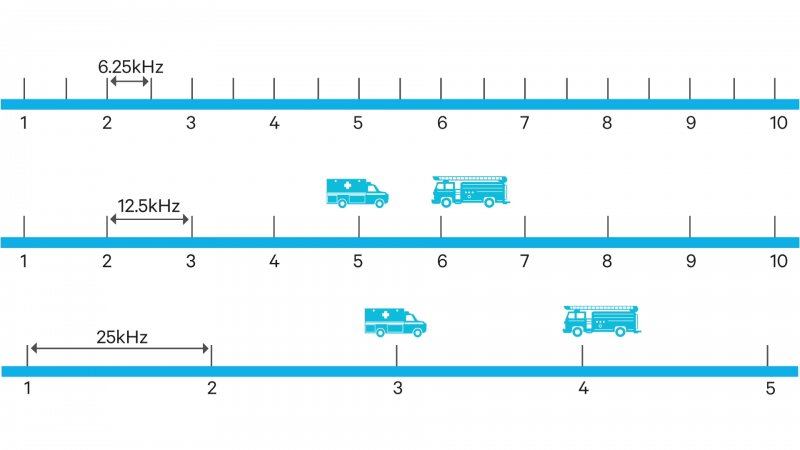Basic Radio Awareness
Modulation and Radio Building Blocks
Introduction to Channel Spacing
Radio spectrum is very limited. Every user of radio spectrum needs a “pipeline” or block of pipelines in order to communicate over.
These pipelines are called channels and they are differentiated by their frequency. Just like a pipe has a certain diameter, an RF channel has frequency bandwidth or channel spacing.
Wideband channels occupy 25 kilohertz of radio spectrum.
A narrowband channel is half that size and occupies 12.5 kilohertz
Ultra narrowband is half the size again at 6.25 kilohertz, and it is the smallest “pipe” of all.
There’s a basic engineering tradeoff here (engineering is full of tradeoffs). The smaller the channel spacing is, the greater the number of channels that can fit into a given block of radio spectrum. More channels mean that more users are able to use the available spectrum to communicate. However, the wider the channel spacing is; the better the reception and audio fidelity will be. So there’s a tradeoff here between audio fidelity and reception on the one hand, and getting the maximum use of the radio spectrum on the other.

A block of radio spectrum is like a big section of highway, a fixed width across. It’s got to support two lanes: One for receiving radio, one for transmitting radio. A wideband channel is like having two big lanes, big enough to transport a house down each lane. This is like wideband, and it is not a very efficient use of this highway; a more efficient use would be if these big single lanes were sub-divided into half-sized lanes.

With these half-sized lanes, houses cannot be transported through anymore, but trailers and SUVs can probably fit through without any trouble. The number of users has increased, but those big chunks like the houses can no longer fit through. This is similar to how Narrowband works.

To get even more users, sub-divide these two half-sized lanes into a four lane highway on each side: Four lanes receiving and four lanes transmitting. Now only quite small cars will fit through. More users can get through, but a part of the functionality has been lost. This is similar to how Ultra Narrowband works.
 Radio Academy
Radio Academy






